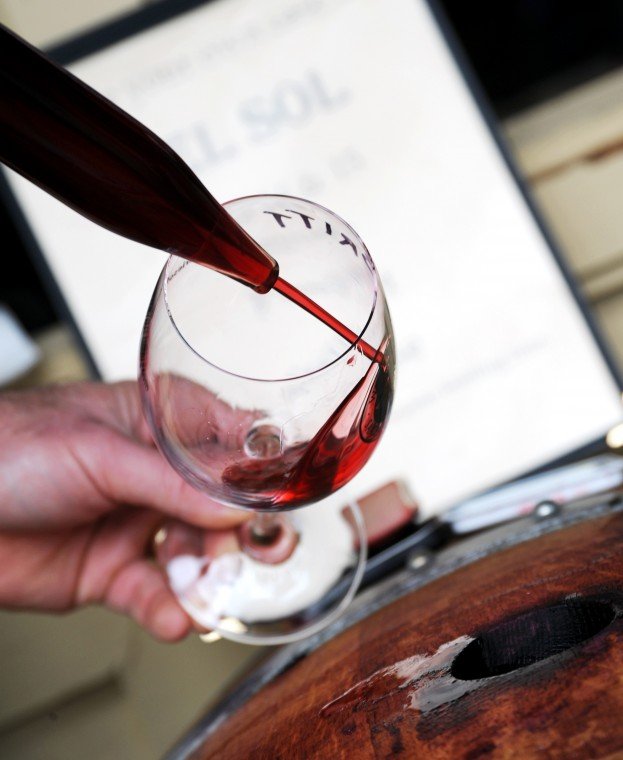
Mixed reviews are following an ambitious effort aimed at clarifying existing laws that regulate the local wine industry, after the project dragged on for more than a year.
District 1 Santa Clara County Supervisor Mike Wasserman – who initiated the process – says he’s happy with the outcome of the 14-month undertaking intended to bolster agritourism, enhance the viability of wineries and update rules related to outdoor amplified sound, gathering allowances, signage and industry/marketing events, to name a few.
Santa Clara County agritourism “got a big boost” when the new winery regulations were unanimously accepted by the Board of Supervisors, Wasserman insists.
Other reactions are varied.
Executive Director Jennifer Scheer with the Santa Clara County Farm Bureau summed up her view of the final outcome, concluding that “we didn’t get everything that we wanted as an industry … but now we have something on paper that we can move forward with.”
Several local winemakers – approximately three out of a dozen who responded (on the record) to an inquiry from the Dispatch – echoed each other’s sentiments as they reflected on the final results.
Wasserman’s intentions are “commendable,” but vintners including Sheldon Haynie of Lightheart Cellars in San Martin, Vic Vanni of Solis Winery on Hecker Pass and Dhruv Khanna of Kirigin Cellars on Watsonville Road say they’re wary of the outcome.
“Supervisor Wasserman began this process with good intentions, but we all know the old adage about good intentions,” said Vanni. “With the hope of improving agritourism, I believe the county greatly failed. I do not see this new ordinance as a catalyst for improved agritourism.”
Haynie said he understands the county’s responsibility to balance the concerns of various stakeholders, acknowledging “this may have been the best result we could have reasonably expected.”
Wineries, for example, are now allowed to have up to 12 industry/marketing-related events per year without paying for a $2,000 special permit or a $14,742 use permit.
Still, “I remain skeptical of any time a government agency tells me ‘we are here to help,’ and then starts taking a detailed look at my operation and suggests making changes to the law,’” Haynie concluded.
Wasserman and Principal Planner Rob Eastwood insist changes are for the better.
Due to “improved” regulations, Santa Clara is now among the most “lenient” and “business-friendly for wineries” in California, they say after the Board of Supervisors unanimously approved a revised winery ordinance Dec. 7.
Two of the significant changes include:
Wineries must purchase an outdoor acoustical permit (“about” $1,000; good for as long as the facility is in operation) if they want to host live bands or have amplified music during an event.
Previously, a winery technically would have needed a $14,732 use permit to have outdoor amplified sound, but this was never really enforced.
Scheer points out the $1,000 fee is what the winery has to pay the county, and does not factor in potential services from noise consultants who conduct the review, for example.
The county also expanded the outdoor amplified sound ordinance to include all commercial, industrial, and institutional facilities (wineries, schools, churches, bars, restaurants, etc.), but reasons those types of facilities already have permits that allow for music, Eastwood said.
Previously, wineries were technically supposed to have a $14,732 use permit to hold events. Now, a winery may hold an event “by right” under the following stipulations:
• Wineries smaller than five acres may host up to 50 guests. Any more guests, and they must obtain a $2,000 special permit (which is good for several years).
• Wineries larger than five acres may host up to 100 guests. Any more guests, and they must obtain a $2,000 special permit.
• Wineries that hold events within these “by right” brackets still have to purchase a $1,000 acoustical permit if they want to have outdoor amplified music.
• An event with more than 250 people requires a $14,732 use permit; the life of which varies with each winery.
Winery owners, alternately, asked that gathering allowances be size-proportionate to winery acreage and previously hoped for sliding scale figures.
Eastwood says the “by right” gathering allowance (50 for wineries less than five acres, up to 100 for wineries larger than five acres) in Santa Clara County under the new ordinance strikes a medium between that of comparable counties including San Luis Obispo and El Dorado (49), Santa Barbara (79) and Amador (125).
Throughout the entire process, Wasserman maintained that existing rules (although confusing and not consistently enforced) technically required winery owners to have a costly “use permit” ($14,732) to host any sort of commercial, industry or marketing event, be it a small, medium or large gathering.
The new ordinance streamlines the permitting process, substantially reduces permit fees and balances neighborhood concerns about noise, said Wasserman.
Still, “it will change business practices, and perhaps in unintended ways,” noted Haynie.
Lightheart Cellars, for example, is now debating whether to have a live band for Passport Weekend – “something our guests have clearly enjoyed in the past,” he recalled.
Haynie doubts any of his neighbors would object to Lightheart featuring music in the afternoon between 1 to 4 p.m. – especially since “two of them have had their own kid’s bands practicing at later hours over the years in the past.”
Still, “at this time (live music) would not likely be able to be approved, since we have a one-acre residential lot,” he explained, of his smaller vineyard nestled in a residential neighborhood off Roosevelt Avenue.
Kirigin Cellars owner Dhruv Khanna has “great respect” for Wasserman, but claims the supervisor “fails to acknowledge and appreciate that the new winery regulations are simply a part of the continued avalanche of regulations which the government continues to heap on small businesses – all in the name of being helpful.”
“The reason that the county wineries are, and will continue to be, successful is because our wines are darned good and because our customers in the South Bay, Morgan Hill and Gilroy love good wine,” said Khanna, who says he has already spent more than $300,000 getting his winery up to code. Khanna’s use permit is good for a “measly” five years.
As for the new, reduced $2,000 special permit, Scheer points out that winery owners have seen baseline permit fees skyrocket when required noise, traffic and sometimes biological/environmental surveys are factored in, depending on the size and location of the winery. The county is also in cost recovery mode, meaning permit applicants get charged for any extra work associated with the application process.
Like Wasserman, Eastwood stresses that the new regulations are less stringent than some of the previous rules – even though it might not feel that way – since many of the previous policies were sometimes unclear and not consistently enforced.
“I get that,” he said. “A very bad analogy is that everybody is driving 75 miles per hour, and the speed limit is 55 miles per hour, and we go and say, ‘well we can live with 65 miles per hour.’ If you get to drive 65 miles per hour, that’s much better than 75. We can never compete with what was technically illegal.”












